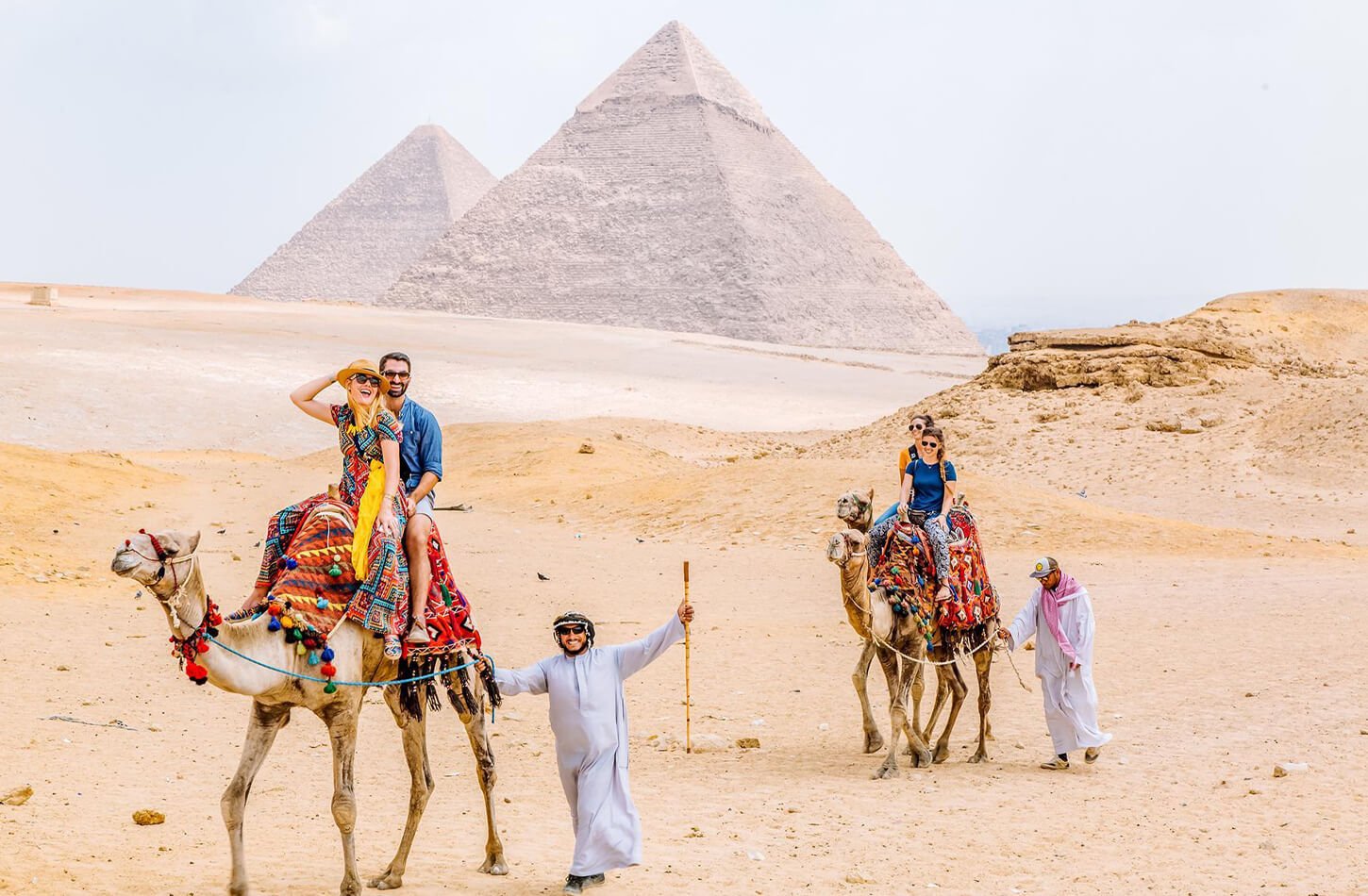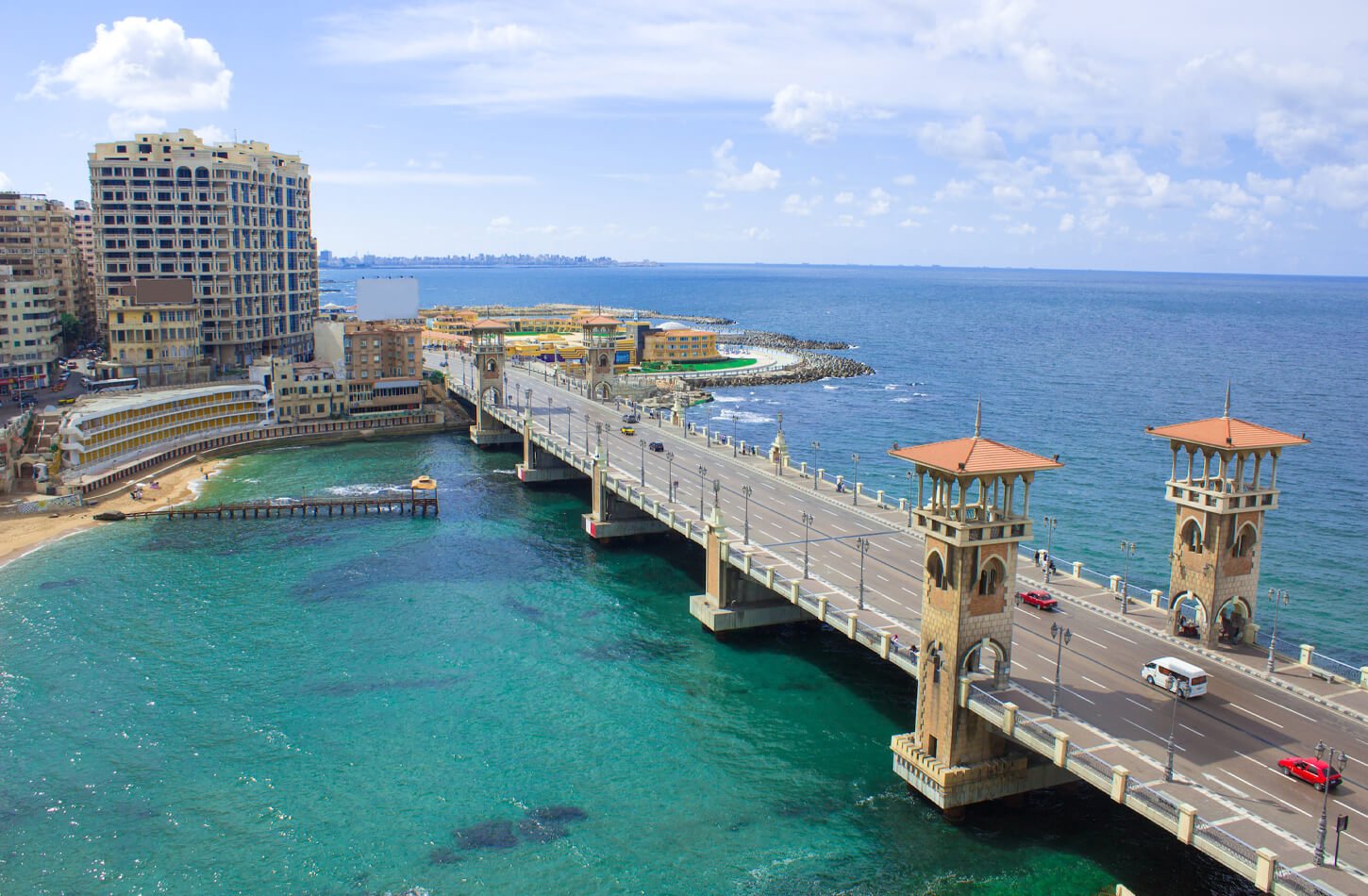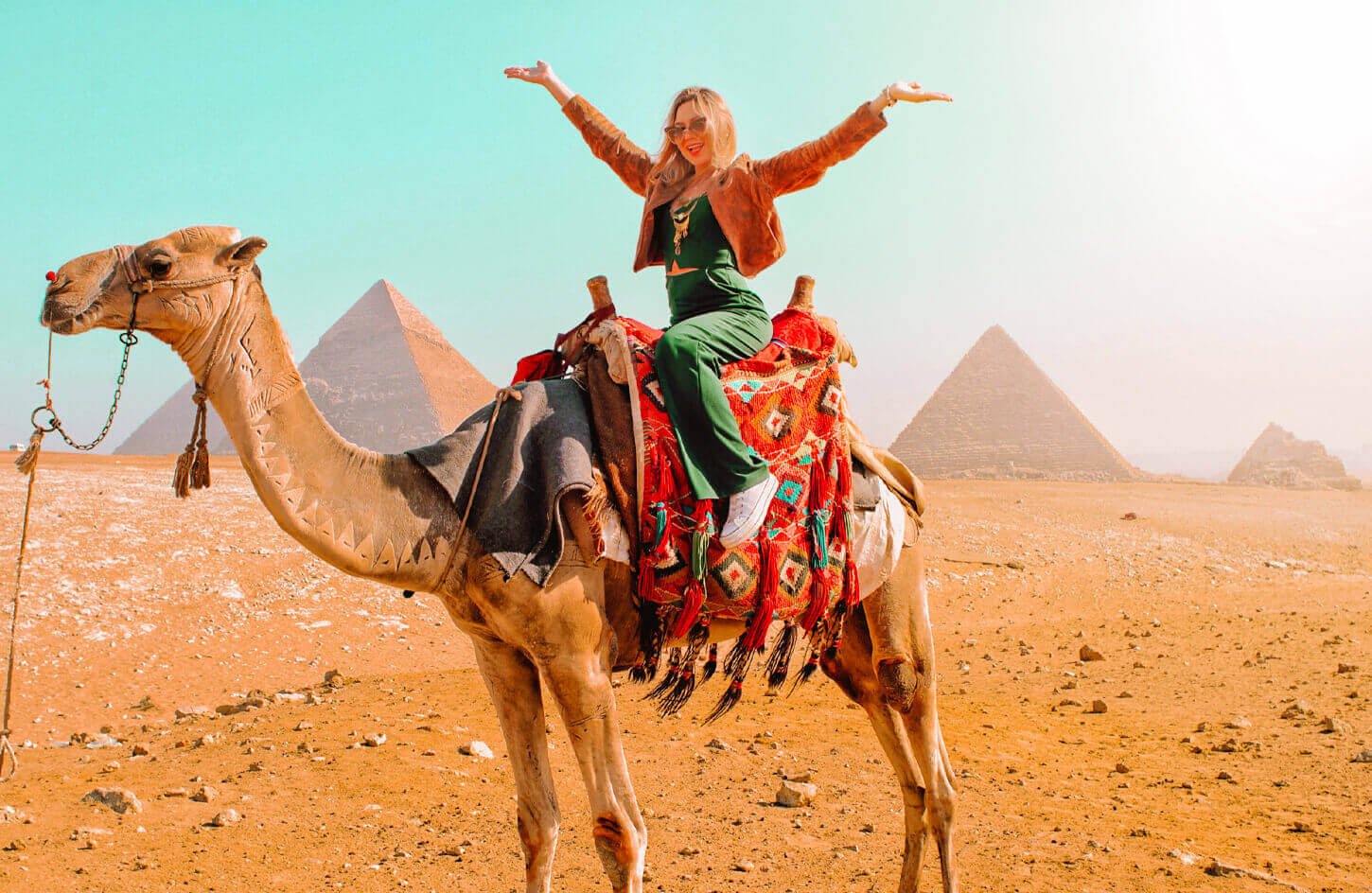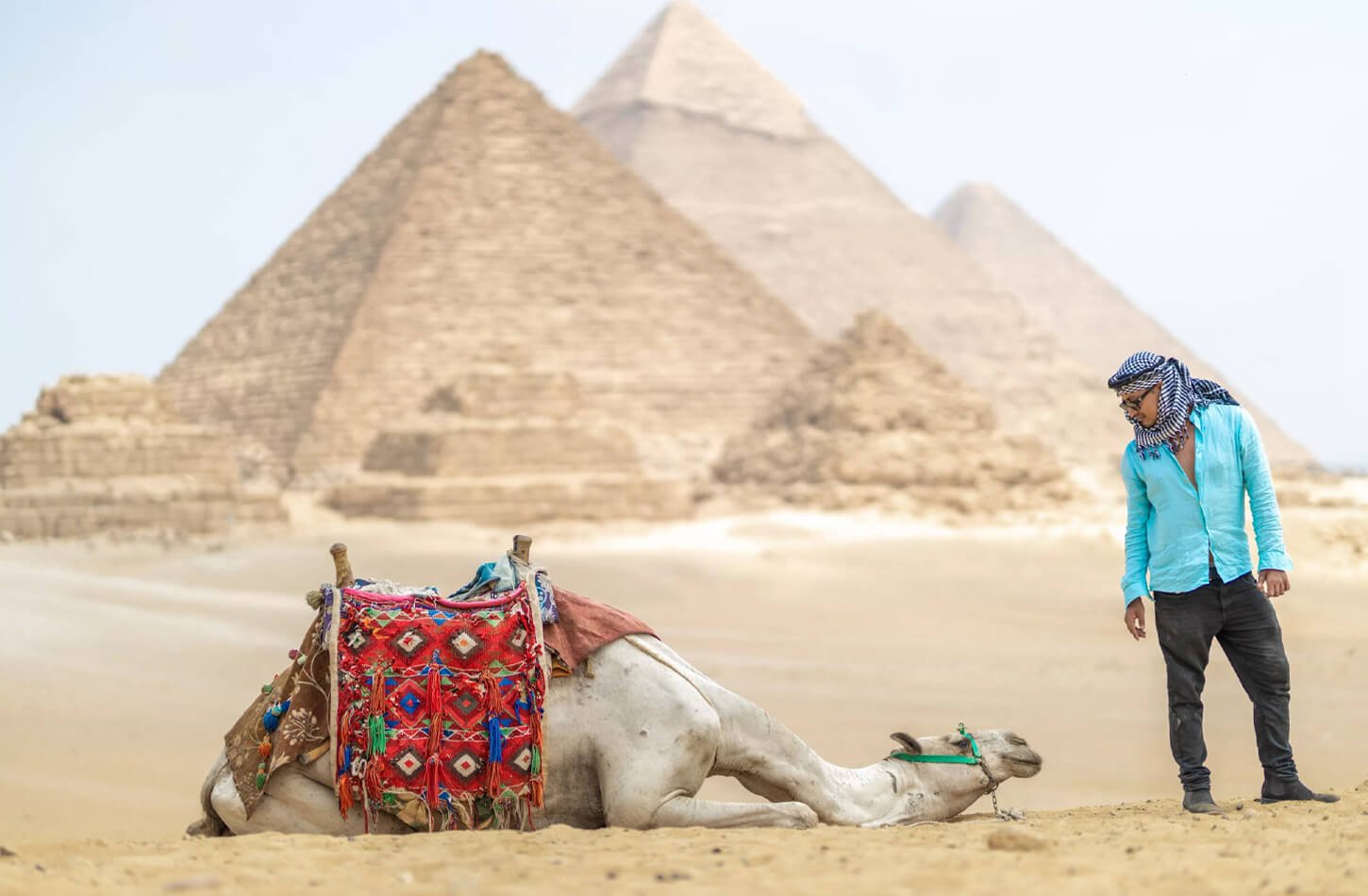Looking for the top 10 things to do in Egypt? This guide opens up over 5,000 years of history and natural wonders. You can see the Pyramids of Giza, built around 2570 BC, or dive in the Red Sea’s clear waters. Egypt mixes ancient wonders with desert adventures.
Stand where the Nile River flows, explore tombs in the Valley of the Kings or dive among coral reefs. The Great Pyramid of Giza, the oldest surviving Wonder of the Ancient World, still holds secrets in its 2.3 million stone blocks. Don’t miss the Egyptian Museum’s golden mask of Tutankhamun or the upcoming Grand Egyptian Museum, set to open in 2024 with over 100,000 artifacts.
Egypt’s magic is in its mix of timeless landmarks and hidden gems. The White Desert’s surreal rock formations, Luxor’s towering Karnak Temple, and Abu Simbel’s colossal statues await. Whether hiking Mount Sinai or sipping coffee in Cairo’s Khan el-Khalili market, every moment tells a story.
This guide helps plan your journey, from temple tours to Red Sea diving spots like Hurghada. With a history older than most modern nations, Egypt offers adventures as vast as the Sahara. Ready to uncover its mysteries? Let’s dive in.
Marvel at the Ancient Pyramids of Giza
The Pyramids of Giza are the top attraction in Egypt. Built 4,500 years ago, they were tombs for pharaohs Khufu, Khafre, and Menkaure. The Great Pyramid of Khufu was once 146.6 meters tall but now stands at 138.8 meters.
It was made of 2.3 million limestone blocks. Each side is perfectly aligned with the earth’s directions, showing ancient precision.
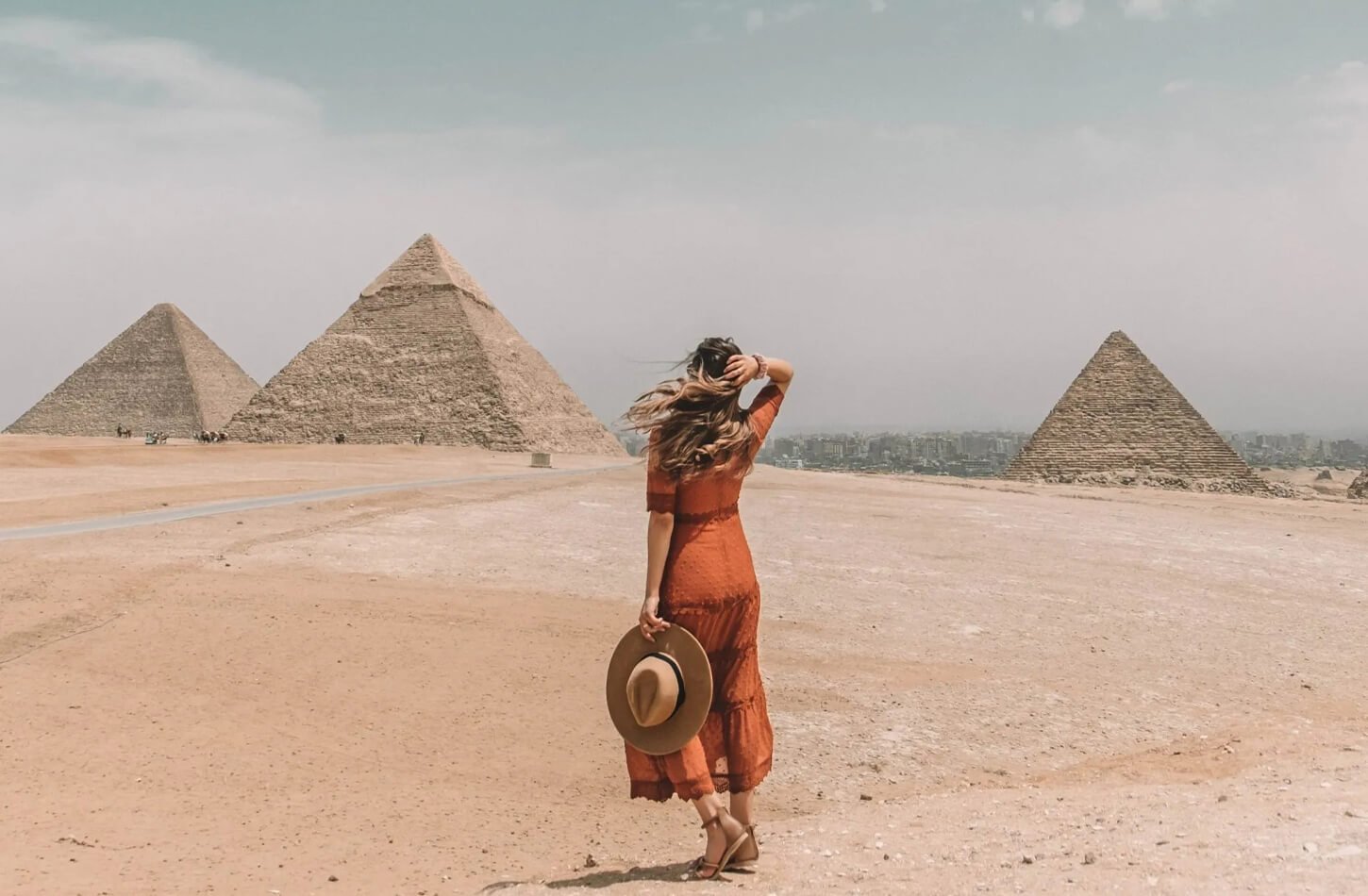
Understanding the Historical Significance
The pyramids were more than tombs. They symbolized a pharaoh’s divine right to rule. The Sphinx, with a lion’s body and a pharaoh’s face, guards the complex.
Beneath Khufu’s pyramid, hidden chambers were recently found. They might hold secrets yet to be discovered. The Solar Boat Museum shows a 4,500-year-old cedar vessel, revealing burial rituals.
Best Times to Visit the Pyramids
- Early mornings (6–10 AM) for cooler temperatures and fewer crowds
- Late afternoons (4–7 PM) for golden-hour photography
- Winter months (December–February) for mild weather
Tips for Taking the Perfect Pyramid Photograph
Go to the Panoramic Point for a view of all three pyramids. For dramatic shots, come during sunrise or sunset. Use a wide-angle lens to show the desert’s vastness.
Don’t miss the Sound and Light Show at night. It offers a unique view of Egypt’s history.
Explore the Treasures of the Egyptian Museum
The Egyptian Museum in Cairo is a must-see in Egypt. It has over 120,000 artifacts, like Tutankhamun’s golden mask. This gives a peek into ancient history. Here’s what you should see:
- Tutankhamun’s Legacy: See the golden mask of King Tut. It’s next to his chariots and jewelry. The Grand Egyptian Museum, opening in 2024, will show all of Tutankhamun’s items together.
- Ramses II’s Presence: A huge 11-meter statue of Ramses II greets you. The Royal Mummies room is nearby. Here, you can see mummies like Seti I and Ahmose I.
- New Exhibits, New Vistas: The Grand Egyptian Museum near the Pyramids of Giza will have 15,000 artifacts. It has 12 galleries with interactive displays. You can even see the Sphinx from its courtyard.
Other places to visit include Luxor Museum and the Nubian Museum. Spend 2 hours at the Cairo Museum. Buy tickets online to avoid long lines. Visit Giza’s pyramids too for a full day of history.
Pro tip: Take a guided tour to learn about hieroglyphics and mummification tools. Whether you’re new or a history lover, these collections make ancient stories come alive.
Discover the Magnificent Temples of Luxor
Luxor is a key spot in Egypt, filled with ancient wonders. It’s home to Thebes, a place of grand temples and tombs. These sites are like an open-air museum, bringing history to life.
Visiting Karnak or walking through pharaohs’ tombs is unforgettable. Luxor’s treasures are truly unmatched.
Karnak Temple Complex: The Largest Religious Building Ever Constructed
At Karnak Temple, you’ll see where 30 pharaohs left their mark. Highlights include:
- Ram-headed sphinxes lining the entrance, symbolizing divine protection.
- The Hypostyle Hall’s 134 towering columns, some 30 meters high, creating a cathedral-like space.
- The sacred lake, once used for purification rituals.
Luxor Temple: Experiencing Ancient Egypt at Night
See Luxor Temple at dusk for a special glow. Built by Amenhotep III and Ramses II, it shows architectural brilliance. A night visit is peaceful, unlike the daytime crowds.
Arrive early to see the temple’s grand entrance and famous granite scarabs.
Valley of the Kings: Where Pharaohs Rest
Explore the Valley of the Kings, where New Kingdom pharaohs are buried. Key tombs include:
- Tutankhamun’s tomb (KV62): 700 EGP), famous for its golden treasures.
- Seti I’s tomb (KV17): 2,000 EGP), with intricate wall paintings.
- Ramesses V/VI (KV9: 200 EGP), showcasing dramatic burial chambers.
Book guided tours to make the most of your visit. Many combine this with a Luxor Pass for discounts. A standard pass ($130) covers major East Bank sites. The premium option ($250) includes Seti I’s tomb and the Valley of the Queens.
Cruise Down the Legendary Nile River
Adding a Nile cruise to your Egypt vacation ideas is like floating through history. This 4,160-mile river is the world’s longest. It’s a top thing to do in Egypt.
Whether you want luxury or simplicity, a cruise is great. You’ll see temples, ruins, and local life from the water.
Picking Your Perfect Nile Adventure
- Luxury cruises: All-inclusive ships with guided tours and fine dining.
- Traditional dahabiyas: Wooden boats offering cultural immersion at a moderate cost.
- Feluccas: Sails powered by wind, perfect for sunset trips with local crews.
Most cruises last 3–7 days between Luxor and Aswan. Prices vary. Always tip $10–$15 daily for crew and guides.
Highlights Along the Nile
Every bend in the river shows wonders:
- Kom Ombo Temple: A double temple dedicated to two gods, split into sacred and mundane sections.
- Philae Temple: A Greco-Roman gem moved stone-by-stone to save it from the Aswan Dam’s waters.
- Nubian villages: Colorful homes and crafts in communities that’ve thrived here since ancient times.
- Edfu Temple: Best-preserved temple, built over 2 centuries under Ptolemaic rulers.
Sail Like the Ancients on a Felucca
Riding a felucca is like experiencing the Nile as pharaohs did. These boats glide silently past papyrus-dotted banks. At night, stargaze and listen to tales of the river’s role in Egyptian mythology.
Pack light clothing and a camera. A 1–2 hour sunset cruise is perfect with a Nile cruise. This mix of adventure and history is a highlight for your top 10 things to do in Egypt.
Uncover the Top 10 Things to Do in Egypt for History Enthusiasts
History lovers, Egypt has secrets waiting for you. This guide shows you hidden spots where ancient stories come to life. Follow these steps to explore Egypt’s rich history:
- Step Pyramid of Djoser – Start at Saqqara. It’s the world’s first stone structure, built around 2700 BCE.
- Bent and Red Pyramids – At Dahshur, see Sneferu’s early pyramid designs. They show how pyramids evolved.
- Valley of the Queens – Near Luxor, find Nefertari’s colorful tomb. It was discovered in 1898.
- Abu Simbel Sun Festival – Twice a year, sunlight shines on Ramses II’s temples. It’s a magical sight.
- Karnak Temple’s Hypostyle Hall – Walk among 134 huge columns in this New Kingdom wonder.
- Philae Temple – Rebuilt on Agilkia Island, it honors Isis. Its carvings show ancient rituals.
- Temple of Edfu – Built from 237–57 BCE, it’s known for its Horus walls and intact pylon.
- Catacombs of Kom El Shoqafa – Explore three levels of Roman-Egyptian tombs. See a spiral staircase and Medusa’s face.
- Siwa Oasis’s Oracle Temple – Alexander the Great visited here. It’s a desert oasis unlike other Egypt sites.
- Library of Alexandria – A modern building near the ancient library. It honors ancient knowledge.
Travel with a licensed Egyptologist guide to learn more. Look for the best times to visit, like the Abu Simbel festivals. These sites let you see 5,000 years of history up close, without the crowds.
Experience the Vibrant Atmosphere of Egyptian Markets
Explore Cairo’s Khan el-Khalili Bazaar for a rich experience. This 14th-century market is more than a place to shop. It’s a mix of history and culture at every turn. With over 1,000 vendors, you’ll find everything from spices to silverware.
Navigating Khan el-Khalili Bazaar in Cairo
Getting lost in the colorful alleys? Follow the scent of saffron and cardamom to the spice quarter. Key areas to explore:
- Al-Silseriyya Spice Market: Sample cumin and anise at stalls that have existed since the Mamluk era
- Gold souk: Compare filigree jewelry under the shaded arcades
- Café Fishawi: Sip mint tea in this 200-year-old café where Naguib Mahfouz once wrote
Haggling Etiquette: How to Shop Like a Local
Smile and follow these tips for fair prices:
- Start at 50% of the vendor’s first price
- Counter with phrases like “bayz el-‘ayn” (it’s too dear)
- Agree on a price before touching items
For example, that ornate water pipe priced at $50? Aim for $25 after friendly negotiation.
Unique Souvenirs Worth Bringing Home
Take a piece of Egypt home with these authentic picks:
- Hand-painted papyrus scrolls depicting pharaohs
- Hand-blown glass perfume bottles (try the blue Nile-inspired designs)
- Spice blends in clay pots (cinnamon, sumac, and dukkah mixes)
- Nubian musical instruments like the tar drum
Pro tip: A Nubian lyre might drop from $300 to $60 with skillful bargaining. Perfect for your living room or a gift for music lovers!
Dive into the Underwater Wonders of the Red Sea
Planning your Egypt trip? Don’t miss the Red Sea’s coastal wonders. Imagine diving where desert meets blue waters. You’ll see vibrant reefs and over 1,000 fish species, 10% found nowhere else. It’s perfect for both divers and snorkelers.
Top Dive Sites:
- SS Yolanda Wreck: Dive this 1980-sank ship, now a colorful reef full of life.
- Blue Hole in Dahab: A spot for expert divers, with deep underwater cliffs.
- Giftun Island: Snorkelers love its clear waters and coral gardens with parrotfish and butterflyfish.
Not into diving? The Red Sea has plenty for you. Try kitesurfing in El Gouna or windsurfing in Dahab. Families will enjoy Soma Bay, where kids can snorkel safely. For a special experience, take a sunset glass-bottom boat tour to see dolphins near Sataya Reef

Liveaboard Options:
- All Star Scuba Scene: A five-deck boat for 28 guests, great for diving trips.
- M/Y Blue Horizon: Offers luxury like air-conditioned cabins and private TVs for a comfy dive trip.
Visit from March to May or September to November for the best weather. Choose eco-friendly tours to protect the reefs. With over 44 shark species and stunning coral, it’s a diver’s dream. The Red Sea is a vibrant contrast to Egypt’s ancient sites, making it a must-see for any trip.
Savor Authentic Egyptian Cuisine
Exploring Egypt’s top spots means trying local foods. Egyptian dishes mix Mediterranean and Middle Eastern tastes. They show the country’s rich history. Here are some dishes you must try:
- Koshari: Egypt’s favorite dish has rice, lentils, macaroni, chickpeas, and tomato sauce. Add crispy onions for extra flavor.
- Ful Medames: A breakfast favorite, it’s slow-cooked fava beans with bread, tomatoes, and olive oil.
- Ta’ameya: Egypt’s falafel is made with fava beans, softer than chickpea ones. Find them at Cairo’s Khan el-Khalili market.
Choose street food stalls with lots of customers and fresh ingredients. Stay away from raw or undercooked foods in crowded places. Busy spots in Alexandria’s Corniche or Luxor’s souks are safer.
Here are the best places to enjoy Egyptian food:
- Cairo: Try Shawarma al-Azhar in Islamic Cairo for tasty meat sandwiches.
- Alexandria: Enjoy liver with chili paste or fresh fish from the Mediterranean.
- Luxor: Eat at family-run places for molokhia stew and grilled meats.
- Aswan: Try gahetta (stuffed vegetables) and baladi bread at riverside cafes.
Drink sherbet (fruit drinks) or sahtet (spiced tea) with your meals. Egyptian food is both tasty and affordable, making any trip better.
Embark on a Desert Adventure to the White Desert and Siwa Oasis
Imagine a place where snow-white rocks look like giant mushrooms and abstract sculptures. The White Desert and Siwa Oasis are hidden gems in popular destinations in Egypt. They offer a calm contrast to Cairo’s busy streets or the Nile’s peaceful waters. These spots mix amazing views with cultural experiences, making them top best activities in Egypt for those who love adventure.
- White Desert Wonders: Ride 4×4 vehicles over dunes to see amazing formations. Camp under a sky so clear, you can see galaxies you can’t see anywhere else.
- Siwa’s Hidden Treasures: Walk to the Temple of the Oracle, where Alexander the Great looked for answers. Enjoy natural springs like Cleopatra’s Bath or explore mud-brick villages that seem frozen in time.
- Adventure Essentials: Try sandboarding, go on dune buggy tours, or join guided walks to learn about history. Local Bedouin guides will share stories of old trade routes and survival tips.
These deserts also connect to other oases like Bahariya (with the Mummy Plateau) and Farafra (near Crystal Mountain’s quartz cliffs). For a complete experience, spend 3–4 days exploring both places. Most tours start from Cairo, including all you need like permits and guides. Bring light clothes for the desert nights, good shoes for walking, and sunscreen for the day.
Whether you’re chasing stars in the White Desert or enjoying mint tea with Siwan families, these areas show what popular destinations in Egypt can offer. They prove Egypt’s wonders go beyond ancient sites—into landscapes where nature created its own art.
Conclusion: Making the Most of Your Egyptian Adventure
Egypt sightseeing is a mix of ancient wonders and vibrant culture. Start by visiting famous sites like the Pyramids of Giza and the Egyptian Museum. Don’t miss Luxor’s Karnak Temple, the largest religious building ever.
Explore the Valley of the Kings and cruise the Nile. Each journey has its own story.
Plan your trip for October to April for better weather. For a week, see Cairo’s highlights like the Sphinx. Add Luxor and Aswan for a two-week trip.
Use domestic flights and trains to travel cheaply. Guides make your visit to sites like the Temple of Edfu special.
Remember to budget for special entries like King Tut’s tomb. Dress modestly and learn basic Arabic. Tipping is common and appreciated.
Don’t miss sunrise at the Pyramids or the solar alignment at Abu Simbel. These events show Egypt’s grandeur.
Egypt is a mix of history, nature, and local life. Dive the Red Sea or try koshari street food. Every moment connects you to 5,000 years of history.
Plan well and your trip becomes a journey through time. Every temple and market tells stories of pharaohs and modern Egyptians. Egypt, with its firsts, is waiting for you.
Read our Related Article:

